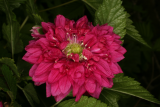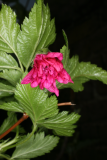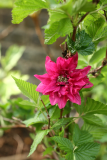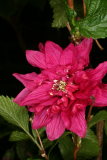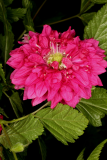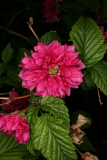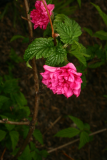Additional notes (click to expand)
Medicinal
In traditional herbal medicine the following notes apply to the species of this plant:
The leaves and the root are astringent[172]. A poultice of the chewed leaves has been used as a dressing on burns[257]. The root bark is analgesic, astringent, disinfectant and stomachic[257]. A decoction is used in the treatment of stomach complaints[257]. A decoction has been used to lessen the pains of labour[257].
http://www.pfaf.org, https://pfaf.org/user/plant.aspx?LatinName=Rubus+spectabilis
Other use
Rubus spectabilis Pursh Rosaceae. The cultivar 'Olympic Double' is a double form which does not bear fruit. Salmonberry. Perennial woody herb. Distribution: West coast of North America from Alaska to California. The fruit (technically, drupelets) look like a raspberry and are edible, made into jams and used to make a purple to dull blue dye. Moerman (1998) found them used by almost every North American tribe, mostly culinary for the fruits and young shoots. A favourite 'medicinal' use being the application of chewed sprouts to the head of a child to make him grow (Kwakiutl tribe). Linnaeus (1782) recommends Rubus for scurvy (as well as fevers, rashes, and coughing up blood).
Oakeley, Dr. Henry F. (2013). Wellcome Library notes.
link
In traditio
Rubus spectabilis 'Olympic Double'
Family: ROSACEAEGenus: Rubus
Species: spectabilis
Cultivar: 'Olympic Double'
Distribution summary: Northern America
Habit: Shrub
Hardiness: H5 - Hardy; cold winter
Garden status: Currently grown
Garden location: North America (A)
Reason for growing: Medicinal, other use
